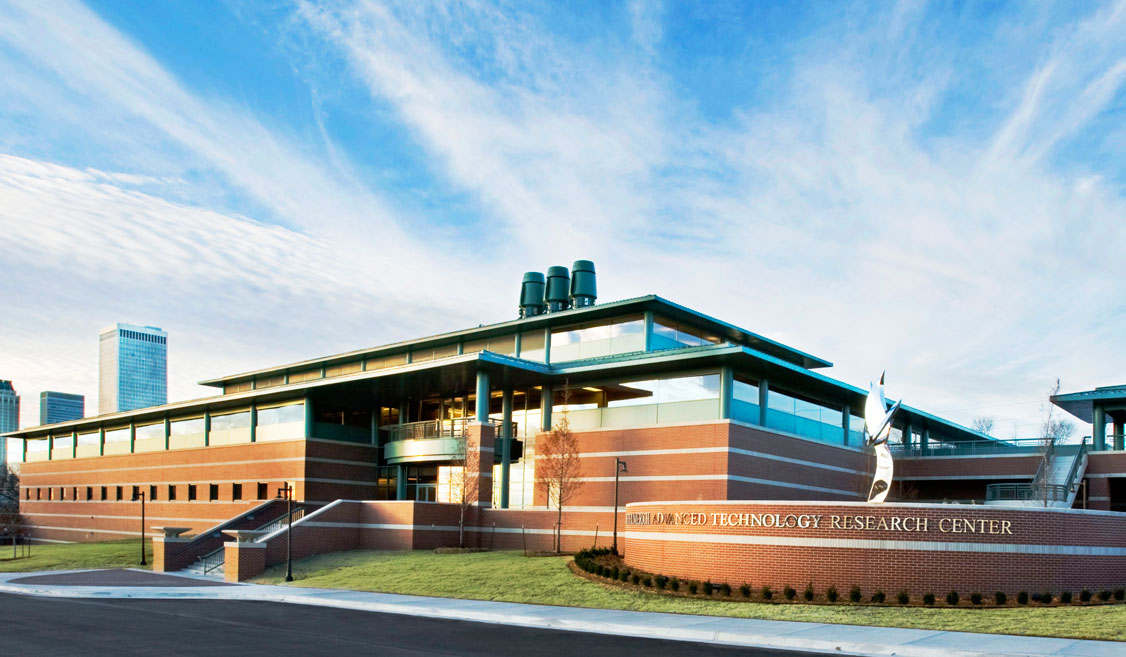Building Partnerships
Tuesday, November 3, 2015

Oklahoma State University’s 27-year relationship with the Oklahoma Center for the Advancement of Science and Technology (OCAST) is becoming even stronger.
OCAST will be using office space in the Helmerich Research Center (HRC), a state-of-the-art research facility on the OSU-Tulsa campus. OCAST works with entrepreneurs and small to medium-size businesses on innovation and manufacturing to advance science and technology in Oklahoma through funding for projects from grants. It also assists business owners with integrating innovative techniques into manufacturing.
“We sponsor manufacturing activity, particularly in support of advanced manufacturing processes and techniques,” says Michael Carolina, executive director of OCAST. “Our universities, specifically OSU and the New Product Development Center, are an integral part of what we do because of the focus on manufacturing process and techniques.”
“The HRC has high-quality equipment that OCAST can utilize to advance its research,” says Robert Taylor, director of the New Product Development Center.
OSU has also offered to hire a full-time design engineer and several students to work with OCAST in the HRC to support the business community in Tulsa. OCAST will use space available in the HRC to meet with Tulsa-area clients.
“Our goal is to expand our services in Tulsa, and OCAST has welcomed the idea of having that increased support,” Taylor says.
The HRC was created to allow development, testing and education to fulfill the commitment made to the residents of Tulsa for Vision 2025. In its mission statement, the HRC is meant to “positively impact the economy and quality of life for the region and provides opportunities for OSU students and faculty to work hand-in-hand with industries.”
“This partnership is the HRC’s mission at its finest. OCAST has worked with OSU and the Oklahoma Manufacturing Alliance (OMA) to connect OSU specialists and researchers with companies that need assistance with a problem,” Taylor says.
“OCAST brings us a lot of business, in terms of companies that need support work,” Taylor says. “A lot of our proposal writing comes through OCAST, and it will identify someone who is looking for funding that is specifically qualified for a Small Business Innovation Research grant. We will support that company in writing those proposals.”
The relationship involving OSU, OCAST and the OMA cultivate needed teaching, outreach and innovation to help businesses grow.
“The collaboration also gives these students on-the-job problem-solving training while they are still in school,” Taylor says. “The easy problems have been solved; the hard problems will come out of these programs.”
The HRC’s 123,000 square feet of space can house up to 40 faculty and researchers and 100 graduate students. The center also has specialized laboratories, a clean room, an imaging suite and advanced information technology equipment. The HRC’s core lab is its biggest asset to OCAST, Taylor says.
“A core lab has equipment that most of us can’t really afford to go buy unless we have a high-value need for it, and the HRC will allow us to use this equipment or give us students who are trained on the equipment,” Taylor says.
OCAST and other businesses using the technology and researchers in the core lab pay a small fee.
“The fees are really small compared with the cost of the equipment,” he says. “It’s been a wonderful move for some of our manufacturing companies that want to try something out without buying a large piece of equipment.”
The primary research conducted in the HRC is on material science, a program on the OSU-Tulsa campus. Ed Kirtley, assistant dean of outreach and extension, says the program is doing cutting-edge research.
“For example, it has developed a new wrap for natural-gas storage cylinders for cars that are natural-gas fueled,” he says. “The research they are doing is state-of-the-art; it’s current, cutting-edge science.”
The variety of opportunities and resources at the HRC will serve as a collaborative space for OSU, CEAT, Tulsa and Oklahoma.
“One of the primary contributions that CEAT can make to the Oklahoma economy is to help small and medium-size manufacturing and businesses overcome technical problems,” Kirtley says. “We can bring the latest research, science and engineering technology to help solve common, everyday problems.”
According to OSU’s experts, researchers and students helping businesses and industries with problems, it allows the companies to be competitive and the industry to grow.
“That’s really the land-grant mission we talk about at its best,” Kirtley says. “This is what the founding fathers of the land-grant mission university meant with research, teaching and outreach all represented.”
